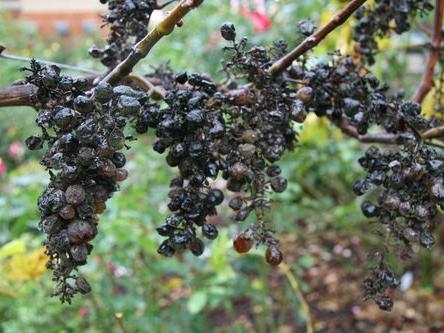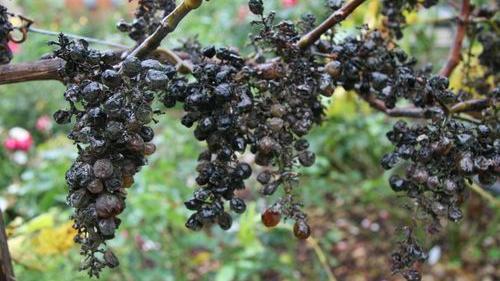
How are raisins made? (Hint: Not like this)

We decided to let our grapes turn into raisins for the fall feast. Actually, Margo decided. I was against the idea. What’s the point of having fresh, delicious grapes shrivel into raisins?
Margo told me we’d let the grapes raisinate on the vine. Raisinate. Good word, right? I didn’t bother researching. I just left the grapes alone.
This is what we got:
Turns out raisinate isn’t really a word. Well, Wiktionary includes it, and the references are indeed to letting grapes shrivel. One catch: it’s done OFF the vine.
There goes our entire season’s crop. Oops.
Raisins are usually harvested at their peak (late summer) and then laid out to dry for anywhere from two days to three weeks, depending on the conditions and your taste preference. Drying can be done outside or in a dehydrator, depending on the climate. The trick is that raisins need hot, dry weather to suck out all that juicy moisture (we’re talking around 85-100 degrees). They’re subject to rot and mold if the conditions aren’t right (like in our coastal-influenced Menlo Park). Be sure to check them consistently.
There is a method for vine-ripened grapes, called DOV (dried-on-vine). This UC study presents DOV as a labor saving solution. Ripe grapes are left on the vine and collected by mechanized harvesting machines. While they technically dry on the vine, it’s no longer attached to a living plant. The point is to increase mechanization and eliminate the need for workers to harvest bunch by bunch. Hm — not quite the vine-ripened garden imagery we had in mind.

